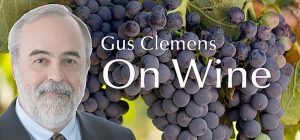Texas wine once was an amusing blip on the wine world radar. There was interesting activity around Lubbock, an ambitious project in the Big Bend, dreamers in the Hill Country, and—of course—ardent over-achievers around College Station.
But wine? In Texas? Come’on man. Seriously?
Well, Texas winemakers are the ones laughing now and skeptics are in their dark, silent corner nursing over-priced, over-oaked Napa fruit bombs.
Texas has gone from 20 wineries in the 1980s to some 450 wineries today. Texas is the fifth largest wine producer in the United States. Granted, dwarfed by California, but California dwarfs everyone. Washington, Oregon, and New York make more, but—hey—now Texas is in the conversation.
And Texas celebrates this each October—Texas Wine Month.
Grape-growing areas are defined by federal designations called American Viticultural Areas: AVAs. Each AVA has an official name and boundaries. Some stretch for Texas miles; others are tiny pockets. An AVA is an attempt is to identify unique terroirs—that amorphous French term that identifies the many elements that make a wine from a specific place different from wine from other places.
Wineries do not have to pay attention to AVAs. If they do, 85% of the wine must come from the geographic area, and the wine must be produced in the AVA. Other Texas areas are petitioning to add more AVAs. Right now, there are eight. This week we explore three around Fredericksburg:
• Texas Hill Country. Located north of San Antonio and south-southwest of Austin, it is the largest AVA in Texas and third largest in the nation. It spreads over nine million acres and 1,000 acres of vineyards. It includes two mini-AVAs: Fredericksburg and Bell Mountain. But grape growing is not the main thing here. Wineries and tasting rooms are. The Texas Hill Country AVA is the second-most visited AVA in the nation, behind only Napa.
• Bell Mountain. This is a tiny AVA within the Hill Country AVA, but it was the first in Texas. It is only five square miles and about 70 acres of vines. Its location allows for quality, lower-temperature grapes cabernet sauvignon, merlot, and pinot noir.
• Fredericksburg. Another pocket in the Texas Hill Country AVA includes some 700,000 acres, but only 60 planted in an assortment of grapes, mostly white. It surrounds the town of Fredericksburg, home to more than 100 wineries, and—to be blunt—exists primarily to add atmosphere to wineries and tasting rooms. Those wineries get their grapes elsewhere—the Texas High Plains. Which we explore next week.
Last round: If money does not grow on trees, why do banks have branches? Wine time.

